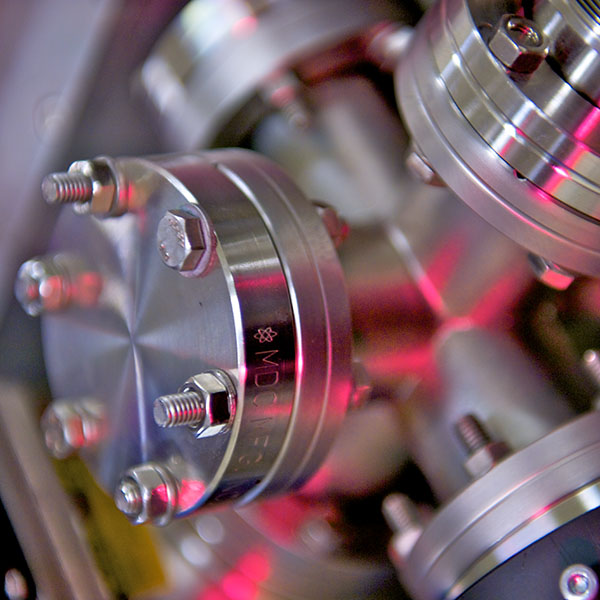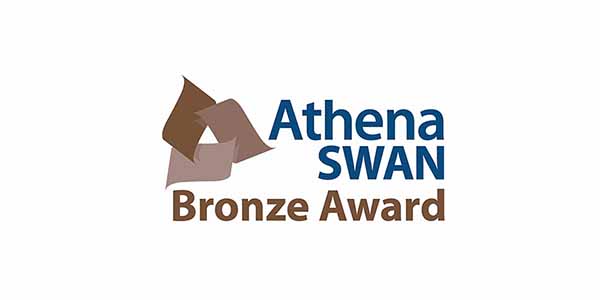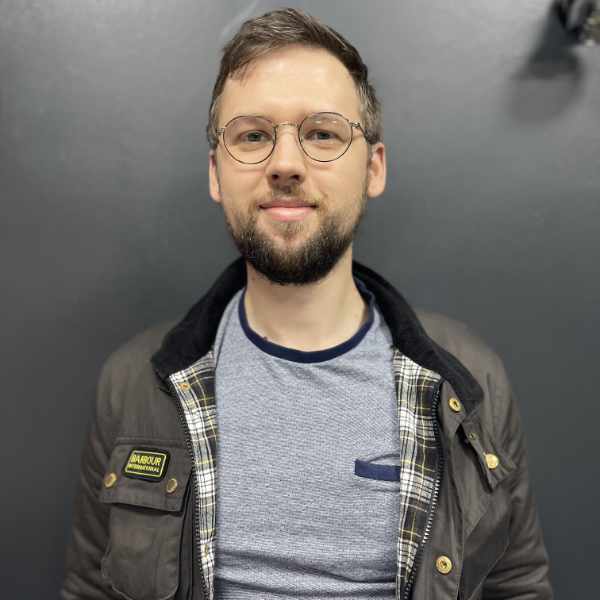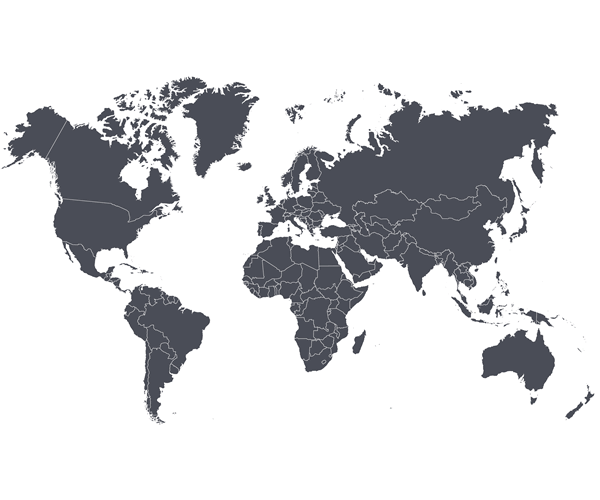Development & manufacture of laser mirror coatings for future gravitational wave observatories & other space applications
3.5 year PhD opportunity with Biomedical Engineering and the National Manufacturing Institute Scotland.
You can study an MPhil or an MRes over one year or a PhD over the course of three to four years.
You can undertake your degree in any of our research groups:
You can also study for an:

3.5 year PhD opportunity with Biomedical Engineering and the National Manufacturing Institute Scotland.
A three year PhD investigating the efficiency of transient non-thermal plasma discharges for different environmental applications is offered by the High Voltage Technologies (HVT) Research group within the Institute for Energy & Environment.
Artificial intelligence and machine learning consume energy, and computing in general requires massive amounts of electricity. In order to meet sustainability goals and avoid energy shortages, new strategies for computation are being explored. In this project we want to explore the possibility of using artificial active matter to develop innovative hardware for non-digital computation and become the active agent in solving computational problems.
Our goal is to embed the 5Rs — Reduce, Recycle, Refuse, Rot, and Reuse — not just in the main targets and applications of these tiny devices, but in their entire life cycle. GREENS is committed to integrating sustainability principles into the design/ fabrication processes and applications of small-scale robots, ensuring that they are environmentally friendly from their initial building blocks (raw materials), through their processing and final disposal.
Plasma photonic structures provide new media for manipulating ultra-high intensity lasers. The PhD project will investigate these plasma structures experimentally and using numerical modelling methods. This challenging project will apply terawatt to petawatt laser beams at the University of Strathclyde and other national and international facilities to create time dependent structures and apply them as optical components and metamaterials for the next generation of exawatt to zettawatt lasers.
In this project we will investigate various approaches for on-demand engineering of trapped spin states in charged quantum dots through a series of coherent control experiments that will explore how the different approaches affect the performance of all optically operated universal single qubit gates.
This PhD research project will involve you undertaking numerical simulations and benchmarking these against experimental measurements either in industry facilities or at the University to investigate novel schemes to suppress undesired sidebands in the output of slot mode antenna. You will also explore alternative antenna designs to realise the same benefits. These antenna can be used in beaming microwave energy for application in energy transfer.
A project to develop and use a new super-resolution optical microscope to obtain very high spatial resolution images of fluorescently labelled live cells.
Within this experimental PhD project, we'll utilise ultracold atoms in a quantum-gas microscope with programmable light potentials for quantum simulation.
This project will focus on the investigation of a hybrid system involving exciton-polaritons and quantum dots in monolithic semiconductor microcavities at the Experimental Quantum Nanoscience Lab. Based on the interaction between the exciton polaritons and electron spins trapped in quantum dots, this system will be investigated towards the creation of scalable quantum hardware.
This PhD project will investigate new neuromorphic functionalities in photonic integrated circuits. The programme will hybridize state-of-the-art semiconductor integrated devices with photo-chemical switches, targeting tunability and all-optical information storage. Those devices will be used to build hardware-based photonic neural networks demonstrating synaptic plasticity and self-learning. This project is part of a funded, international collaboration with groups in Germany and Italy.
Gallium oxide is an emerging semiconductor offering promises for applications in ultraviolet optical devices. The project aims to improve our understanding of the material, elucidate the mechanisms leading to its optical properties, and exploit the findings to produce better devices.
This PhD offers the opportunity to develop an advanced optoelectronic neural implant capable of interfacing with populations of neurons across brain regions. The device will guide two wavelengths of light into deep regions of the brain to allow optogenetic excitation and inhibition of neural activity to enhance our understanding of brain function. Candidates would be expected to have a background in Physics or Engineering, with an interest in neurotechnologies.
Microscopy is a key technology for understanding biological systems. This project seeks to combine super-resolution techniques with the use of nanodiamond based measurements of biological activity, such as sub-cellular thermometry.
PhD position available to undertake frontier research in nanotechnology of noble metal nanoparticles.
In this PhD project we aim to develop next-generation neural interfaces that combine multi-wavelength control of neurons with electrophysiological recording. The student will join a well-resourced team of researchers, including physicists, engineers and neuroscientists with collaborations across the US and Europe.
A fully-funded PhD studentship is available in high power laser-plasma physics, working within a vibrant team of experimentalists and theoreticians, to investigate the onset of a new regime of high-field relativistic plasmas.
A fully-funded position to undertake research on quantum fluids. You'll work closely with the supervisor to develop a state-of-the-art experimental apparatus to explore vortex dynamics in binary superfluids, with a particular emphasis on reduced dimensionality where quantum effects are enhanced.
PhDs are available in an exciting and challenging research area, with a vibrant group of experimentalists and theoreticians developing and applying ultra-compact accelerators and x-ray sources based on laser-plasma interactions.
Scaling quantum systems requires a move from bulk components and bench-top experiments to on-chip circuit architectures. The range of functions required to deliver these chipscale systems means that they cannot be manufactured on a single material platform. In this project the student will develop photonic circuit technologies operating at visible wavelengths and with integrated membrane devices for function-on-demand, realised using nanoscale accurate heterogeneous integration methods.
Modelling of laser light propagating in micro-ring resonators in collaboration with experiments performed at the Max Planck Institute for the Science of Light in Erlangen (Germany). Applications of these devices are in atomic clocks, quantum technologies, telecommunication, GPS and integrated photonic circuits.
This project will take advantage of the EPSRC strategic equipment Electron Probe MicroAnalyzer (EPMA) at the University of Strathclyde to investigate wide bandgap semiconductors (AlGaN, Ga2O3, and h-BN) materials and devices for far UV-C applications.
Advanced robotic systems are increasingly making use of networks of distributed sensors and feedback control systems embedded in their structure to improve the sensitivity, accuracy, adaptability of their motion. This project will develop a new form of opto-electronic 'nerve' infrastructure for robotic components based on co-fabricated optical waveguide and mechanical structures with critical dimensions in the 10-3 - 10-1 mm range and multi-modal sensing and communications functionality.
One of the most important areas of research to make quantum computers useful is developing practical quantum algorithms. In this project, you will tackle some of the many open problems that stand in the way of using quantum computers to speed up scientific computing. You will use both analytical and computational methods to carry out your research, including running algorithms on test bed quantum computers.
The project will develop advanced spatial modulation techniques leveraging the 2D array of optical transmitters and receivers to enable scalable high-capacity MIMO optical wireless communication. The goal is to develop optical frontends to enable massive parallelism and effective spatial decoding algorithms to enable high spectral efficiency and efficient communication.
Photonic supraparticles are closed-packed assemblies a few tens to thousands of nanometres in size made of photonic nanoparticles, the latter acting as the building blocks or ‘nano-bricks’ for the SP. Our team has established self-assembly processes to fabricate SPs from the bottom-up; we have shown we can make microscopic lasers this way and are engineering their performance and applications. This PhD project will push the development of SP photonics and explore aspects of this technology.
Structural imperfections in the crystalline materials used to make electronic and optoelectronic devices, can limit device performance and can lead to device failure. In this project the student will push the limits of electron backscatter diffraction (EBSD), a scanning electron microscopy technique, to investigate the structural properties of new materials such as AlGaN nanostructures in development for UV LEDs, or halide perovskites for next generation solar cells.
A fully-funded position to undertake research in the ground-breaking field of quantum sensing and measurement, after the first year specialising in Atom Interferometry.
A fully-funded position to undertake research in the ground-breaking field of quantum sensing and measurement, after the first year specialising in Atomic Clocks.
A fully-funded position to undertake research in the ground-breaking field of quantum sensing and measurement, after the first year specialising in Magnetometry.
This project will develop new numerical techniques for studying many-body quantum systems far from equilibrium, exploring the possible phase transitions which can be realised.
You will be part of a new research area for the UK, namely making absolute and traceable measurements of temperature using optical measurements of the Doppler broadening of an atomic transition. The aim is to scale to practical (~mm sized) sensors using miniature optical cells filled with appropriate atomic/molecular species. This project is in conjunction with external collaborative partner Graham Machin at the National Physical Laboratory (NPL).
The first year will work closely with a funded project to develop a methodology for computing with photonic devices (both classical and quantum computing). Subsequent years will extend the work to develop applications and further examples of applying the methodology to physical devices suitable for computing.
The aim is to take advantage of the noise in qubits as resource for materials simulations within quantum embedding approaches to overcome the finite size limitations of existing quantum algorithms. Based mainly in the Quantum Technologies Department at the Teddington NPL site in Greater London.
John Anderson Research Studentship Scheme (JARSS) doctoral studentships are available annually for excellent students and excellent research projects.
There are two main sources of funding:
The JARSS 2025/26 competition will open in October 2024 and students successful in this competition will commence studies in October 2025. Faculties will set their own internal deadlines for the competition.
Academics/Supervisors make the applications for this scheme and there are various deadlines across Departments and Faculties, therefore, in the first instance, all interested students should contact the Department where they would like to carry out their research.

All fees quoted are per academic year unless otherwise stated.
Entrants may be subject to a small fee during the writing up period.
Fees may be subject to updates to maintain accuracy. Tuition fees will be notified in your offer letter.
All fees are in £ sterling, unless otherwise stated, and may be subject to revision.
Students on programmes of study of more than one year (or studying standalone modules) should be aware that the majority of fees will increase annually. The University will take a range of factors into account, including, but not limited to, UK inflation, changes in delivery costs and changes in Scottish and/or UK Government funding. Changes in fees will be published on the University website in October each year for the following year of study and any annual increase will be capped at a maximum of 10% per year.
| Scotland | £4,786 |
|---|---|
| England, Wales & Northern Ireland | £4,786 |
| Republic of Ireland |
If you are an Irish citizen and have been ordinary resident in the Republic of Ireland for the three years prior to the relevant date, and will be coming to Scotland for Educational purposes only, you will meet the criteria of England, Wales & Northern Ireland fee status. For more information and advice on tuition fee status, you can visit the UKCISA - International student advice and guidance - Scotland: fee status webpage. Find out more about the University of Strathclyde's fee assessments process. |
| International | £25,250 |
| Funding | Take a look at our funding your postgraduate research web page for funding information. You can also view our scholarships search for further funding opportunities.
|
| Postgraduate research opportunities | Search for all funded and non-funded postgraduate research opportunities. |
| Additional costs | International students may have associated visa and immigration costs. Please see student visa guidance for more information. |
Please note: the fees shown are annual and may be subject to an increase each year. Find out more about fees.
Want to know more about what it’s like to be a Science student at the University of Strathclyde? A selection of our current students are here to help!
Our Unibuddy ambassadors can answer all your questions about courses and studying at Strathclyde and offer insight into their experiences of life in Glasgow and Scotland.
Our research ranges from looking at the fundamental properties of the universe to developing technologies that have the potential to improve health care in the future.
Take a tour of one of our physics quantum research labs on YouTube and get a flavour of what it’s like to study with us.

|
Supervisor |
Research interests |
Current PhD student topics |
|---|---|---|
| Dr Gordon Robb |
|
|
| Professor Thorsten Ackemann |
|
|
| Dr Alan Kemp |
|
|
| Dr Daniel Oi |
|
|
| Dr Paul Griffin |
|
|
| Dr John Jeffers |
|
|
| Professor Rob Martin |
|
|
| Dr David McKee |
|
|
| Dr Konstantinos Lagoudakis |
|
|
| Professor Andrew Daley |
|
|
| Dr Jonathan Pritchard |
|
|
| Dr Jennifer Hastie |
|
|
| Dr Michael Strain |
|
|
| Dr Oliver Henrich |
|
|
| Dr Johannes Hernsdorf |
|
|
| Dr Fabien Massabuau |
|
|
| Dr Aidan Arnold |
|
|
| Dr Stuart Ingleby |
|
|
|
|
|
|
|
|
|
||
|
||
|
||
|

Everyone is so friendly, and you don’t feel any pressure when talking to your lecturer or any academic staff.
The Strathclyde Doctoral School offers a vibrant, student-centred research and training environment, dedicated to supporting both current and future research talent.
Bringing together all four of our faculties, it is committed to enhancing the student experience, increasing research outputs and opportunities, and ensuring that training is delivered at the highest standard.
As a postgraduate researcher, you will automatically become a member of the Strathclyde Doctoral School.

All our physics research students are members of the Scottish Universities Physics Alliance (SUPA) Graduate School which supports postgraduate-level training across Scotland.
You'll take 40 hours of technical lecture courses in your first two years along with 20 hours of transferrable skills training.
Our PgCert RPD programme aims to ensure you get the most out of your current research activities at Strathclyde and help you prepare for your future career as a researcher.
We'll help you recognise and develop your transferrable skills that'll have a positive impact on your research, now and in the future.
Find out more about the PgCert RPD programme.
The University Careers Service can help you with everything from writing your CV to interview preparation. Take a look at our Careers Service pages to get more information.
From financial advice to our IT facilities, we have a wide range of support for all students here at Strathclyde. Get all the information you need at Strathlife.
We've a thriving international community with students coming here to study from over 140 countries across the world. Find out all you need to know about studying in Glasgow at Strathclyde and hear from students about their experiences.

You require to have one of the following:
During the application you'll be asked for the following:
By filling these details out as fully as possible, you'll avoid any delay to your application being processed by the university.
You can identify and interact with a supervisor before applying, or you can let us know who you'd like to work within your application and we'll team you up with the best supervisor for your project. When we've received your application, your research proposal is passed to potential supervisors for consideration. If it's not compatible with the researcher's current projects and they are unable to supervise, it's passed along to another for consideration. If they can supervise you, they'll confirm and nominate a potential second supervisor. As soon as a second supervisor is confirmed, an offer of study will be sent to you through Pegasus, our online application system.
When you accept our offer, you'll receive a full offer in writing via the email address you'll have provided.
When you've accepted our offer, we'll need you to fulfil any academic, administrative or financial conditions that we ask.
If you're applying as a UK or EU student, you'll then be issued with your registration documentation.
An ATAS (Academic Technology Approval Scheme) clearance certificate is a mandatory requirement for some postgraduate students in science, engineering and technology.
Telephone: +44 (0)141 548 3362
Email: physics-pgr-enquiries@strath.ac.uk
John Anderson Building
107 Rottenrow
Glasgow
G1 1XJ
All fees quoted are per academic year unless otherwise stated.
Entrants may be subject to a small fee during the writing up period.
Fees may be subject to updates to maintain accuracy. Tuition fees will be notified in your offer letter.
All fees are in £ sterling, unless otherwise stated, and may be subject to revision.
Students on programmes of study of more than one year (or studying standalone modules) should be aware that the majority of fees will increase annually. The University will take a range of factors into account, including, but not limited to, UK inflation, changes in delivery costs and changes in Scottish and/or UK Government funding. Changes in fees will be published on the University website in October each year for the following year of study and any annual increase will be capped at a maximum of 10% per year.
| Scotland | £5,006 |
|---|---|
| England, Wales & Northern Ireland | £5,006 |
| Republic of Ireland |
If you are an Irish citizen and have been ordinary resident in the Republic of Ireland for the three years prior to the relevant date, and will be coming to Scotland for Educational purposes only, you will meet the criteria of England, Wales & Northern Ireland fee status. For more information and advice on tuition fee status, you can visit the UKCISA - International student advice and guidance - Scotland: fee status webpage. Find out more about the University of Strathclyde's fee assessments process. |
| International | £27,800 |
| Funding | Take a look at our funding your postgraduate research web page for funding information. You can also view our scholarships search for further funding opportunities.
|
| Postgraduate research opportunities | Search for all funded and non-funded postgraduate research opportunities. |
| Additional costs | International students may have associated visa and immigration costs. Please see student visa guidance for more information. |
Please note: the fees shown are annual and may be subject to an increase each year. Find out more about fees.